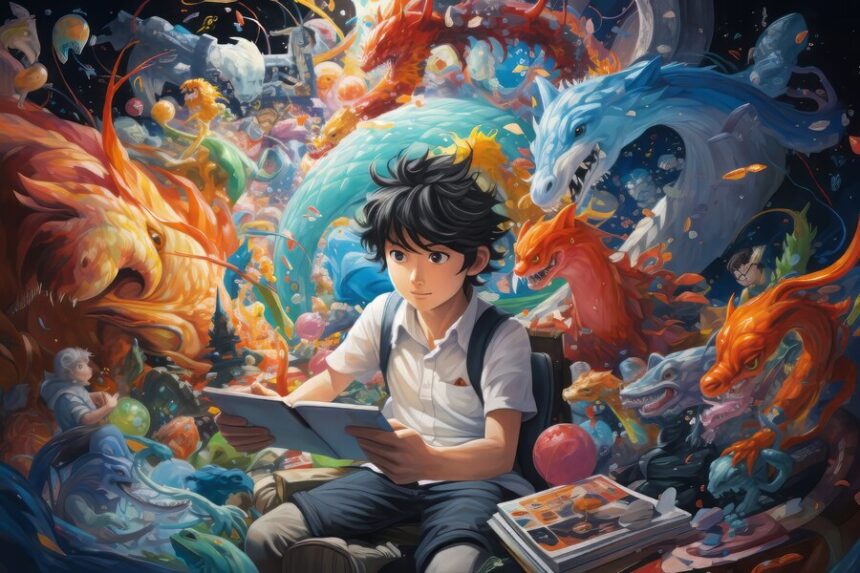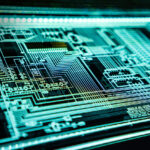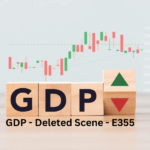Introduction to Digital Art Ankinsart
In the vibrant world of art, an innovative force is reshaping how we view creativity: digital art Ankinsart. This unique blend of technology and artistry is captivating audiences and inspiring a new generation of creators. Gone are the days when traditional mediums reigned supreme; now, artists can harness the power of pixels to craft stunning visual narratives. With each brushstroke on a digital canvas, Ankinsart pushes boundaries and explores uncharted territories in artistic expression. Whether you’re an art enthusiast or a curious newcomer, prepare to dive into the extraordinary realm where imagination meets innovation!
The History of Digital Art and Technology’s Influence
Digital art has roots that trace back to the 1950s. Early pioneers experimented with computers to create visual works, laying the groundwork for a new artistic medium.
As technology advanced, so did digital tools. The introduction of personal computers in the 1980s revolutionized access to art creation. Software like Adobe Photoshop opened doors for artists everywhere.
The internet further transformed this landscape. Digital platforms allowed creators to share their work instantly with a global audience. This connectivity has fostered collaboration and innovation among artists.
Today, digital art is more than just pixels on a screen; it’s an evolving form of expression influenced by advancements in virtual reality and artificial intelligence. Artists now have unprecedented opportunities at their fingertips, blending traditional techniques with cutting-edge technology.
Each development shapes how we perceive creativity and challenges conventional boundaries within the art world.
How Ankinsart Uses Technology to Create Unique Pieces
Ankinsart harnesses cutting-edge technology to push the boundaries of creativity. By utilizing advanced software, each piece emerges as a vibrant blend of traditional techniques and modern aesthetics.
The integration of AI tools allows for innovative designs that adapt and evolve with user interaction. This dynamic process creates artworks that are not just visually appealing but also deeply engaging.
Color palettes are curated through algorithms, ensuring unique combinations that resonate on multiple levels. The precision offered by digital mediums enhances detail while maintaining fluidity in expression.
Through 3D modeling and virtual reality, Ankinsart transports viewers into immersive experiences. Each artwork becomes a gateway to another world, inviting exploration beyond flat surfaces.
Collaborative platforms further extend this vision. Artists and enthusiasts can connect globally, sharing ideas that inspire new creations. In this digital realm, art transcends geographical limitations to foster a vibrant community dedicated to innovation.
Examples of Ankinsart’s Most Popular Works
Ankinsart has captivated audiences with a range of unique digital pieces. One standout artwork is “Ethereal Dreams,” which combines vibrant colors and fluid shapes. This piece invites viewers into a dreamlike landscape that feels both surreal and familiar.
Another favorite is “Urban Pulse.” Here, Ankinsart masterfully captures the heartbeat of a bustling city through dynamic lines and contrasting tones. The energy radiates from the canvas, making it impossible to look away.
“Nature’s Symphony” showcases Ankinsart’s ability to blend technology with organic forms. This work highlights intricate details found in nature, rendered with precision that brings every element to life.
Each piece tells its own story while reflecting Ankinsart’s innovative approach to digital art. Fans eagerly await new creations, knowing they will be treated to fresh perspectives on contemporary themes.
The Impact of Digital Art on the Art World
Digital art has reshaped the landscape of artistic expression. Traditional boundaries are blurring, allowing creativity to flourish in new forms.
Artists now reach broader audiences through online platforms. The accessibility of digital tools democratizes art creation. Anyone with a computer can experiment and share their work globally.
Galleries and museums are adapting too. Virtual exhibits allow viewers from all corners of the world to experience artwork without leaving home. This shift challenges conventional notions about space and interaction with art.
Moreover, digital art fosters collaboration among creators. Artists can blend styles and ideas seamlessly, enriching their practice and pushing innovation forward.
The emergence of NFTs further complicates ownership and value in the art market. It raises questions about authenticity while enabling artists to monetize their creations directly.
As technology evolves, so does our understanding of what constitutes “art.” Digital expressions invite us to rethink tradition, offering fresh perspectives on creativity itself.
Advantages and Disadvantages of Digital Art
Digital art offers incredible flexibility. Artists can experiment endlessly without the limitations of traditional media. Mistakes are easily corrected with a few clicks, allowing for greater creativity.
The accessibility is another major advantage. Anyone with basic software and skills can enter the digital art world. This democratization opens doors for new talent to emerge.
However, there are downsides too. The reliance on technology means that artists must stay updated with software changes and hardware advancements. This constant learning curve can be daunting.
Additionally, some argue that digital art lacks the tactile experience found in physical mediums like paint or clay. Critics often believe this diminishes artistic authenticity.
While sharing work online is easier than ever, it comes with concerns about copyright infringement and theft of ideas in an increasingly digital landscape.
Future Possibilities for Digital Art Ankinsart
The future of digital art Ankinsart is brimming with potential. As technology evolves, so do the tools available to artists. Innovations like augmented reality and artificial intelligence could enhance creative possibilities. Imagine experiencing a painting that interacts with its audience in real-time.
Collaboration between artists in virtual spaces may become the norm. This could lead to diverse artistic expressions and styles merging into unique masterpieces. Community-driven platforms might enable budding creators to showcase their work alongside established names.
Sustainability will likely play a crucial role too. Digital art doesn’t require physical materials, making it an eco-friendly choice for expression. The rise of NFTs also raises questions about ownership and distribution, sparking new conversations around value in the art world.
As more people embrace digital media, accessibility will widen the scope for emerging talents globally, fostering innovation across cultures and mediums alike.
Conclusion: Embracing the Fusion of Technology and Art
The landscape of art is changing rapidly, and digital art Ankinsart stands at the forefront. This fusion of technology and creativity invites a broader audience to appreciate artistic expression in new ways.
Artists harness powerful tools that push boundaries. They reshape traditional concepts, giving rise to innovative styles that challenge perceptions.
As audiences engage with these unique pieces, they find themselves part of a dynamic conversation about what art can be. Digital platforms make it easier for artists like Ankinsart to share their vision globally.
Collaboration also flourishes in this environment, leading to exciting partnerships between tech experts and creatives. The possibilities are endless as emerging technologies continue to evolve.
This transformative journey is just beginning, offering fresh perspectives on artistry that inspire both established creators and newcomers alike. Embracing this evolution opens doors we have yet to fully explore together.
FAQs
Digital Art Ankinsart has certainly made a mark in the ever-evolving landscape of artistic expression. The combination of technology and creativity continues to push boundaries, allowing artists like Ankinsart to explore new dimensions.
As digital art gains traction, many people have questions about its nuances. Here are some frequently asked questions:
Q: What is Digital Art Ankinsart?
A: Digital Art Ankinsart refers to the unique style and creations by artist known as Ankinsart that blend traditional artistry with modern technology.
Q: How does technology influence digital art?
A: Technology provides tools such as graphic tablets and software that allow artists to create intricate designs and artwork more efficiently than traditional methods.
Q: Are there any famous works by Ankinsart?
A: Yes, several pieces from Ankinsart have gained popularity for their innovative use of colors and themes, resonating well with audiences both online and offline.
Q: What are some advantages of digital art?
A: Digital art offers versatility in editing, ease of sharing online, lower production costs compared to physical mediums, and the ability to experiment without wasting materials.
Q: Are there disadvantages too?
A: Certainly. Some argue that it lacks the tactile experience associated with traditional forms of art. Others feel it may sometimes lack originality given how easily styles can be replicated digitally.
Q: What’s next for Digital Art Ankinsart?
A: The future holds exciting possibilities such as augmented reality integrations or interactive installations that could redefine viewer engagement with artworks created by Ankinsart.
Embracing this fusion between technology and creativity not only expands what we consider “art” but also opens doors for emerging artists in this dynamic space.




